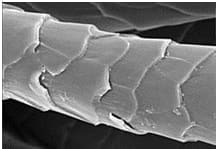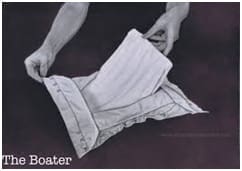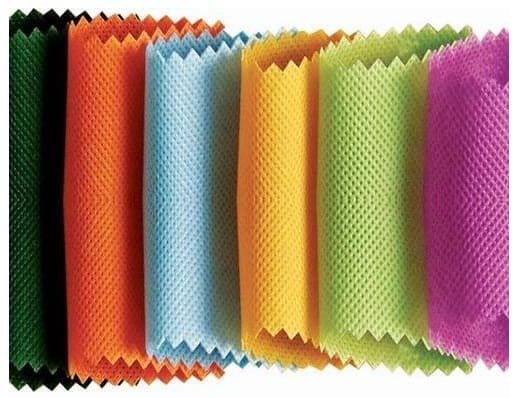Nonwovens arises from more than half a century ago when they were often regarded as low-price substitutes for traditional textiles and were generally made from dry laid carded webs using converted textile processing machinery. The yarn spinning stage is omitted in the nonwoven processing of staple fibers, while bonding of the web by various methods, chemical, mechanical or thermal, replaces the weaving (or knitting) of yarns in traditional textiles.
The actual roots of nonwovens may not be clear but in 1942 the term “nonwoven fabrics” was coined and were produced in the United States. These early “nonwoven fabrics” were created by adhesively bonding fiber webs. The first written definition of nonwoven fabrics came from the American Society for Testing and materials in 1962 which defined them as “textile fabrics made of carded web or fiber web held together by adhesives”.
One of the oldest nonwoven fabrics is felt. Felt is either 100% wool fibers, or a blend containing wool fibers. In 1930’s and 1940’s synthetic polymers, with thermoplastic properties, were developed and introduced on to the market. Freudenberg (a major player in the nonwovens market to this day) began trading in 1938 and went into production artificial leather for World War Two. The main nonwoven process technologies were developed between 1940 and 1965, and this can be seen as the start of the nonwovens industry that we know today.
 Wool and hair fibers, due to their unique surface scales, are the only fibers with the ability to felt
Wool and hair fibers, due to their unique surface scales, are the only fibers with the ability to felt
However, even in the early days of the industry, the process of stitch bonding, which originated in Eastern European the 1950s, employed both layered and consolidating yarns, and the parallel developments in the paper and synthetic polymer fields, which have been crucial in shaping today’s multi-billion dollar nonwovens industry, had only tenuous links with textiles in the first place.
There are many legends regarding the forerunners of nonwoven fabrics. An engineering book prologue called “Introduction to Nonwovens Technology” by Dr. Subhash Batra and Dr. Behnam Pourdeyhimi states that some examples can be found in nature in the nests of birds, cocoons spun by silk worms, and spider webs, to name a few. Other stories place the origin of making felt using wool by the Sumerians as early as the fourth millennium BC. Still others say that either a camel driver or a monk (or perhaps both!) placed wool in their sandals to ease tired feet and, by the end of their long journey, the moisture and pressure had created a soft fabric.

Dr. Subhash Batra Dr. Behnam Pourdeyhimi
But, while the antecedents of modern nonwovens can be contested, Batra and Pourdeyhimi agree that the nonwovens industry truly began in the 1920’s or 1930’s with industrial manufacturing in commercial quantities beginning around 1942. The first disposable diaper using nonwoven fabric was produced by George Schroder in 1947.

First disposable diaper
Though the manufacturing process for these types of materials has gotten significantly easier and less costly over the years, the basic gist of the process has remained the same. Separately loosened fibers are laid on a metal mesh for the purposes of bonding after being laid into the airstream. These long fibers are then bonded together through a series of treatments that are chemical, solvent, mechanical or heat-based in nature. They are neither woven nor knitted, which is where they got their name.
In the last few years, nonwoven fabrics and materials have become a viable alternative to the use of polyurethane foam. This is due in large part to benefits that are inherent in nonwoven fabrics, like the fact that they can be manufactured easily and without a lot of waste. Nonwoven fabrics are also cheaper and more environmentally friendly than polyurethane foam, both of which are qualities that make them ideal for a large number of situations.
BIBLIOGRAPHY
Home Stratosphere. (2019). 21 Different Types of Napkins. [online] https://www.homestratosphere.com/types-of-napkins/
Scribd. (2019). Finishing Of Nonwovens: Singeing. [online] Available at: https://www.scribd.com/document/231794024/Finishing-of-Nonwovens-For-Majors


